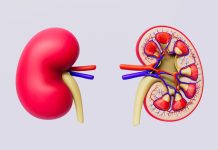
In a study from the University of Illinois Chicago, scientists found an emergency department type 2 diabetes (T2D) screening program can identify patients with undiagnosed prediabetes and diabetes.
Patients at risk for T2D were flagged with a best practice alert (BPA), which was built into the electronic medical record. If blood was drawn, the clinician had the option to add hemoglobin A1c (HbA1c) measurement.
Patients were called to provide results and inquire about prior awareness and treatment of diabetes.
Overall, 8,441 patients visited the emergency department during the pilot study; the BPA triggered tests for 2,576 patients and an HbA1c result was available for 2,074 of these.
A total of 1,085 patients with an HbA1c result (52.3%) had an abnormal reading: 69.9% and 30.1% had prediabetes and diabetes, respectively.
The team tested a total of 352 patients. The researchers found that 50.0% of the patients had public insurance and 4.0% were uninsured.
Overall, 25.0% of the patients self-reported that they had been diagnosed with prediabetes or T2D; only 58.0% of them reported receiving treatment.
The team says this emergency department screening program found a substantial number of patients with undiagnosed prediabetes and T2D or undermanaged disease, particularly racial and ethnic minority individuals and low-income patients.
If you care about diabetes, please read studies about berry that could help prevent diabetes, obesity, cancer, and this surgery could ‘cure’ type 2 diabetes.
For more information about diabetes, please see recent studies about drinks that could make type 2 diabetes less deadly, and results showing this small habit can make big progress in diabetes control.
The study was conducted by Kirstie K. Danielson et al and published in JAMA Network Open.
Copyright © 2023 Knowridge Science Report. All rights reserved.



